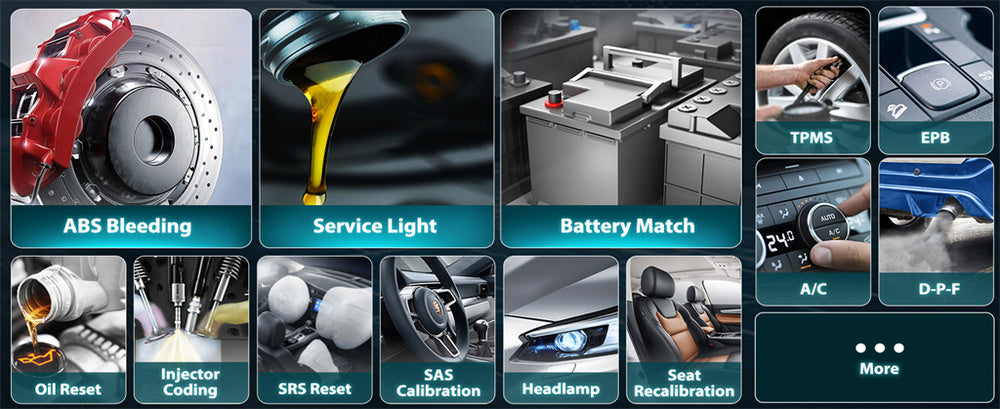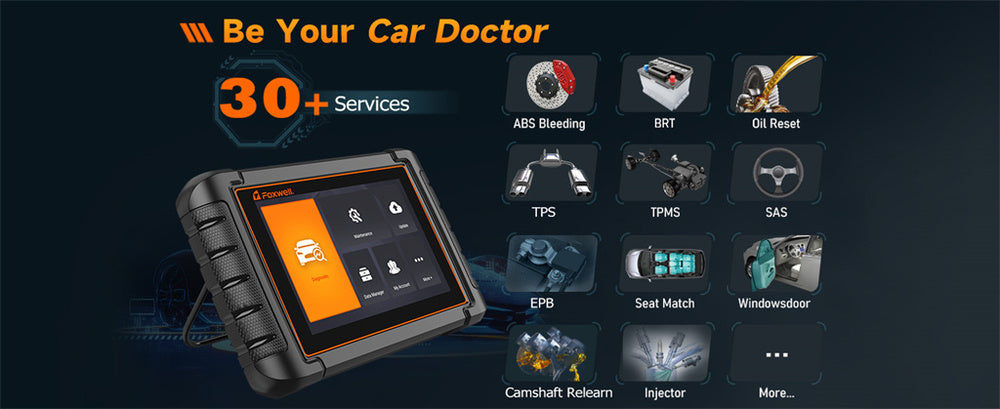Onboard Diagnostic Tests, or OBD, are indispensable features of modern vehicles for monitoring engine and emissions systems. Each car’s OBD system serves as its diagnostic tool to ensure everything works as intended.
When a vehicle’s system malfunctions, diagnostic trouble codes are stored and can be read by a diagnostic scanner for testing and repair purposes.
These diagnostic scans offer invaluable insight into vehicle maintenance and repair processes and assist drivers in spotting problems before they become costly or dangerous.
How Does Onboard Diagnostics Work?

OBD uses sensors throughout your vehicle’s engine and other critical systems to monitor parameters like engine temperature, oxygen levels, air-fuel mixture levels, and more. These sensors record essential information for analysis by the OBD system.
Data about engine performance is fed into an Engine Control Unit (ECU), which utilizes this data to keep its engine operating at peak performance.
Suppose the system detects a problem, such as faulty sensors or inefficient fuel combustion. In that case, it will generate and store a Diagnostic Trouble Code (DTC) within its ECU. Once stored, these DTCs can be retrieved using an OBD scanner plugged into its OBD-II port underneath the dashboard near the driver’s seat.
Once the codes have been read, mechanics or car owners can interpret them to pinpoint any vehicle problems.
The OBD system detects specific problems and monitors emissions systems to ensure compliance with environmental regulations. If any component that affects emissions malfunctions, the OBD will activate a dashboard warning light displaying “Check Engine.”
The Different Types of Onboard Diagnostic Systems
Over time, two primary forms of Onboard Diagnostic (OBD) systems have become famous: OBD-I and OBD-II.
OBD-I was the first diagnostic system available to vehicles, introduced in the early 1980s. It monitored engine performance and emissions while providing limited diagnostic protocols across manufacturers.
OBD-I was designed without detailed trouble codes, which made diagnosing issues more challenging and made mechanics’ jobs even harder. However, OBD-II rectifies this problem.
OBD-II quickly established itself as the industry standard in the mid-1990s. It monitors engine and emissions systems as well as critical components like transmissions, ABS systems, and airbags.
OBD-II ports have become ubiquitous since 1996. Each time an issue arises, OBD generates a Diagnostic Trouble Code (DTC), helping mechanics identify specific problems with the vehicle.
Common Diagnostic Trouble Codes
These codes usually consist of five characters. The first character identifies which system has been affected, such as P for powertrain, B for body, C for chassis, or U for network communication, followed by four numbers.
Here are a few common DTCs:
- P0300: Random/Multiple Misfire Detected
This code indicates an engine misfires, but the exact cause remains unknown. It could be any of several different cylinders.
- P0171: System Too Lean (Bank 1)
This code indicates an issue with the air/fuel mixture.
- P0420 - Catalyst System Efficiency Below Threshold (Bank 1)
This code indicates there may be an issue with your catalytic converter.
Each code comes with additional information that can help mechanics or car owners determine the problem.
Tools and Equipment Needed for OBD Testing
Conducting an OBD test requires an OBD scanner or OBD-II code reader. These devices range from basic handheld models to more sophisticated diagnostic devices used by professionals.
Primary code readers are typically inexpensive and can help car owners identify vehicle diagnostic codes. More sophisticated models may provide additional data and perform functions such as clearing codes or resetting the “Check Engine” light.
One highly recommended product is the Foxwell NT809TS OBD-II Diagnostic Tool. This advanced diagnostic scanner was designed to provide a comprehensive yet easy-to-understand analysis of your vehicle’s performance.
It can read and clear Diagnostic Trouble Codes (DTCs), provide live data analysis, and support Tire Pressure Monitoring System (TPMS) diagnostics.
The Foxwell NT809TS has a high-resolution touchscreen and user-friendly interface, enabling effortless navigation of diagnostic reports and live tracking of vehicle performance.
This device offers many advanced options that make testing vehicle systems easy, including advanced features that allow you to perform system resets, view freeze frame data, and test various vehicle systems such as ABS and SRS systems.
Foxwell NT809TS supports full OBD-II capabilities, such as emissions readiness checks. This tool offers greater insight into vehicle health by helping detect issues early and solving minor problems efficiently to prevent costly breakdowns.
Here are a few other options for OBD tools:
Basic OBD-II scanners: Easy-to-use devices that only display trouble codes.
Professional OBD-II scanners: More sophisticated tools offer data logging, live data monitoring, and reset functions.
OBD-II apps: Many OBD-II apps, such as Torque or Car Scanner, connect wirelessly with Bluetooth OBD adapters to allow users to read codes, clear them out, and monitor real-time data.
Can You Conduct Your OBD Tests?
Car owners can conduct OBD tests themselves using a scanner or app. The process is straightforward mainly:
Connect the OBD-II scanner to the OBD-II port in your vehicle and turn on its ignition (without starting up your engine). Follow the scanner’s instructions to conduct its diagnostic test: It will display codes and provide descriptions of potential issues.
Interpret Codes: Most scanners provide detailed descriptions of trouble codes, which you can use to assess whether the issue can be handled independently or requires professional service.
Although car owners can perform basic OBD testing themselves, complex engine or transmission malfunction issues may require professional intervention.
When this is the case, it is recommended that they consult with a mechanic who possesses all of the tools and expertise required to address such issues.

Why Onboard Diagnostic Tests Are Essential
OBD tests can be beneficial for several reasons:
Preventive Maintenance: Regular OBD tests can identify potential issues early before they escalate into major (and expensive) ones. Emissions Compliance: Many areas require vehicles to pass emissions tests. OBD testing can show whether its emissions system is functioning as designed.
Better Performance: Addressing issues identified through OBD tests can enhance vehicle performance, fuel efficiency, and overall reliability. Cost Savings: Early detection allows for quicker, less expensive repairs.
Conclusion
An Onboard Diagnostic Test (OBD test) is an invaluable asset to any vehicle owner looking to ensure it runs efficiently. From car enthusiasts and DIYers to regular vehicle owners looking to maintain optimal vehicle health, OBD tests can save time, money, and hassle by monitoring vehicle health in real-time. Performing regular OBD checks will save time, money, and frustration.
Understanding how the OBD system operates and reading diagnostic codes will allow you to stay ahead of vehicle maintenance needs, potentially saving thousands in repairs.
With OBD tools like the Foxwell NT809TS, problems can be detected quickly, emissions regulations can be met, and overall vehicle health can be maintained. Knowing exactly how best to respond when your check engine light illuminates will come in handy.
FAQs
What are onboard diagnostics?
Onboard diagnostics (OBD) is a system in modern vehicles that monitors various components, such as the engine, emissions, and other key systems, to detect issues. It logs trouble codes that help identify problems early.
What does the onboard diagnostic system monitor?
The OBD system monitors a range of vehicle functions, including engine performance, emissions control, fuel system, and other critical systems. It ensures these components operate efficiently and meet environmental standards.
What does a diagnostic test show?
A diagnostic test reveals any issues or malfunctions in the vehicle’s systems by displaying diagnostic trouble codes (DTCs). These codes help identify specific problems, allowing for quicker and more precise repairs.




Leave a comment
This site is protected by hCaptcha and the hCaptcha Privacy Policy and Terms of Service apply.